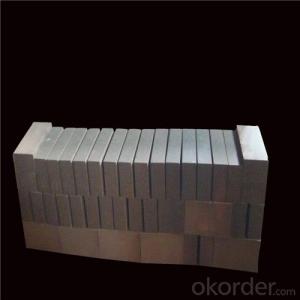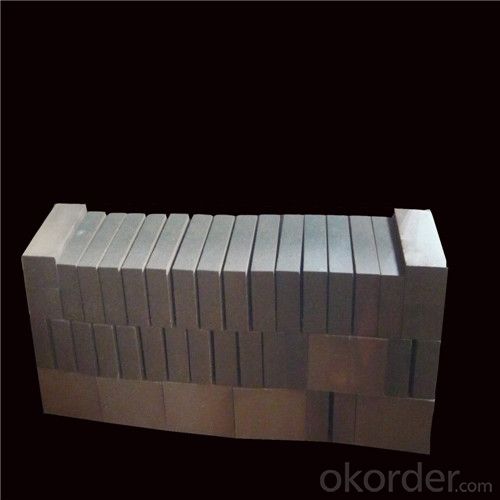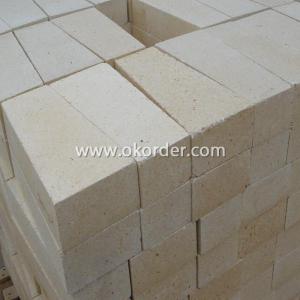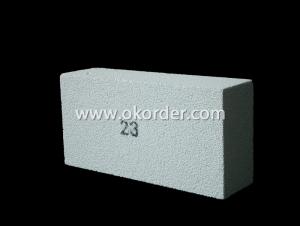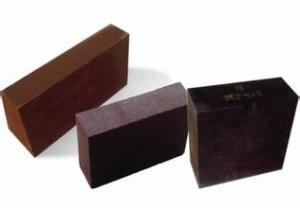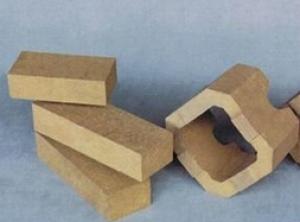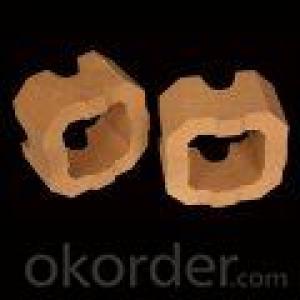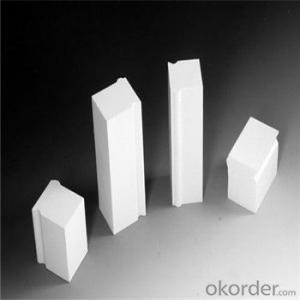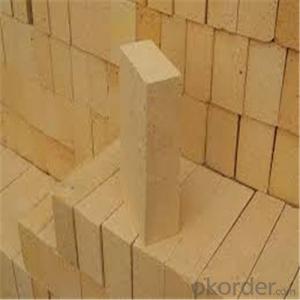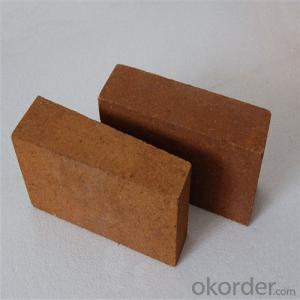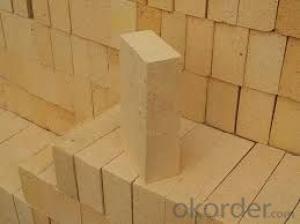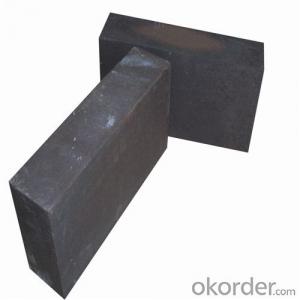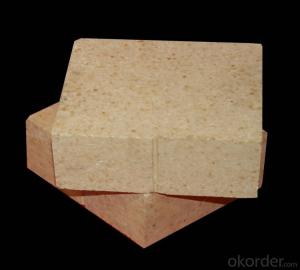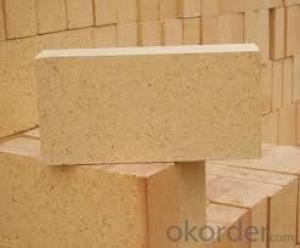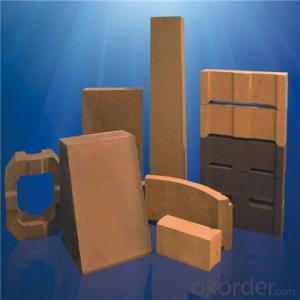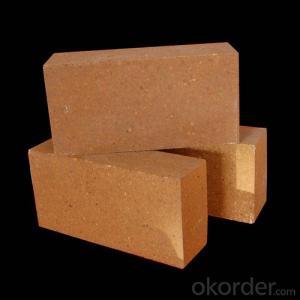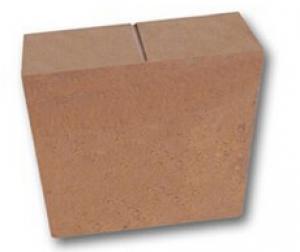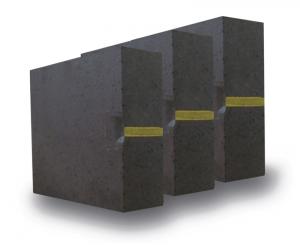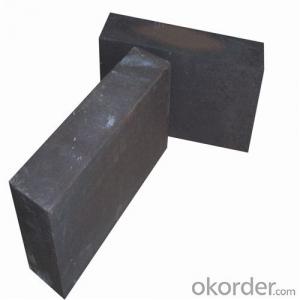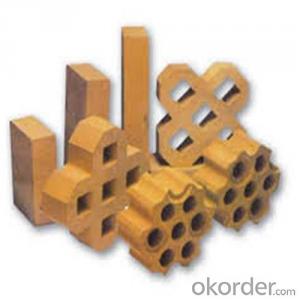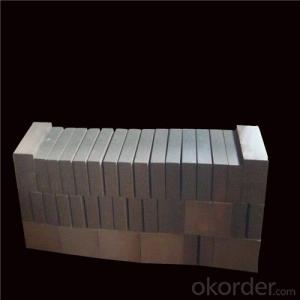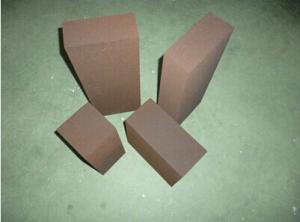Magnesite Chrome Brick for Electric Arc Furnace Roof & LF Lining
- Loading Port:
- Dalian
- Payment Terms:
- TT OR LC
- Min Order Qty:
- 1 m.t.
- Supply Capability:
- 1000000 m.t./month
OKorder Service Pledge
OKorder Financial Service
You Might Also Like
General Information of Magnesite-Chrome Brick
l CMAX magnesite-chrome brick is made of high quality magnesia and chrome ore.
l CMAX direct-bonded magnesite-chrome brick is made of low impurity chrome ore and high purity magnesia and sintered at high temperature over 1700℃.
l CMAX semi-rebonded and rebonded magnesite-chrome bricks are made partially or fully of synthetic fused clinkers. Magnesite-chrome brick are shaped under high pressure and sintered at very high temperature.
Image of Magnesite-Chrome Brick
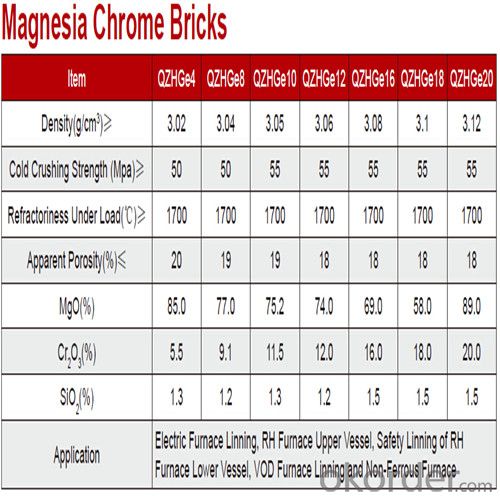
FAQ
Q2: What`s the lead time for my order?
A2: It depends on customers’ requirements and our production schedule. And usually we need 30-60 days for refractory bricks,10-25 days for unshaped refractory materials and 10-20 days for ceramic fiber blankets.
Q3: Can you offer Door-to-Door delivery?
A3: Yes, but only for some countries such us U.S., UAE, Saudi Arabia, Iran, and Russia, etc.
- Q: What are the differences between magnesium chrome bricks, such as direct bonding, re bonding, semi bonding, CO sintering and chemical bonding? Hope expert advice..
- Direct bonded magnesia chrome brickThe loose effect caused by the expansion of spinel when the oxide of magnesia brick is directly reacted with the oxide of iron can also be used to make magnesia chromite brick with synthetic common sintered material. In addition, there are non burned magnesia chrome bricks, for example, non burned magnesia chrome bricks combined with inorganic magnesium salt solutions. The unfired magnesia chrome brick has the advantages of simple production process, low cost and good thermal stability, but the strength of the high temperature is far less than that of the burnt brick. In the late 50s, a so-called "direct bonding" magnesia chrome brick was developed. The characteristics of this brick raw material is pure, high firing temperature, periclase and spinel phase with high temperature directly, silicate and other low melting point phase for island distribution, therefore, significantly improve the high temperature strength and slag resistance of brick.
- Q: Process for producing magnesia chrome brick
- The fine powder compacts after calcination produced by magnesia - chrome ore grinding method, brick with magnesia coarse particles, are effective measures to eliminate the effect of loose. Compared with the common magnesia chrome brick, the magnesia chrome brick made by this method has lower porosity, higher compressive strength, higher softening temperature and higher flexural strength. Compacts with chrome magnesite powder, magnesia chrome brick by synthetic magnesia chrome sand made of high-temperature calcination, slag resistance and high temperature strength are better than other magnesite chrome brick.In addition, magnesite brick and electric arc furnace melting magnesium chromium material by direct casting (see Figure microstructure, color), fused magnesia chrome brick material produced by the process of melting particles combined with magnesia chrome brick etc..
- Q: Refractory brick, high alumina brick, magnesia chrome brick, magnesia brick, clay brick, which type of high temperature refractory brick?
- High alumina brick clay brick up to 1700 degrees above 1500 degrees -1750 degrees of magnesia brick and magnesia chrome brick 1500-1650 degrees.
- Q: What are the environmental hazards of magnesia chrome refractory bricks?
- Some of the magnesia chrome bricks will be converted into Cr6+ when used, producing K2CrO4 and other toxic and carcinogenic compounds such as Cr3+
- Q: How much is magnesium chrome brick a ton?
- The price of bricks in different places is not the same. The average price is about 3500 yuan
- Q: Magnesia chrome brick
- Magnesia chrome brick to Magnesium Oxide (MgO) and chromium oxide (Cr2O3) as the main ingredient, refractory periclase and spinel as main mineral components of products. The bricks have high refractoriness, high temperature strength, strong resistance to alkaline slag, good thermal stability, and certain adaptability to acid slag. The main raw materials for making magnesia chrome bricks are sintered magnesia and chromite. The purity of magnesia raw materials should be as high as possible, chrome iron ore chemical composition requirements: Cr2O3:30 - 45%, CaO = 1 ~ 1.5%.
- Q: How many kinds of refractory bricks are there?
- Magnesia chrome brick: Hang kiln, used for firing zone, the disadvantage is the poor thermal shock resistance, plus six Cr price is highly toxic, the production and use of the national magnesia chrome brick is gradually reduced, the brick production unit as soon as possible to find alternatives.
- Q: Magnesium chrome brick price?
- Dashiqiao magnesium brick factory of China Building Materials Academy is a joint stock company invested, constructed and managed by China Building Materials Academy.The plant was built in 1992, officially put into operation in 1993, covers an area of 89 thousand square meters, has a long 118 meters, an annual output of 30 thousand tons of high temperature tunnel kiln production line. The group has 1200 employees, 6 senior engineers, more than 20 engineers and technicians, and has strong technical force. Group's total assets of 5.5 million, with an annual output value of 600 million. Profit and tax 65 million yuan.
- Q: What is the difference between magnesia chrome brick and direct bonded magnesia chrome brick?
- The magnesia chrome bricks are divided into ordinary magnesia chrome bricks, direct bonding magnesia chrome bricks, half bonded magnesia chromite bricks, fused magnesia chrome bricks, fused magnesia semi bonded magnesia bricks, and unburned magnesia chrome bricks
- Q: What are the main raw materials of magnesia chrome bricks?
- Magnesium alloys are alloys based on magnesium and other elements. Its characteristics are: small density (1.8g/cm3 magnesium alloy or so), high specific strength, high modulus of elasticity, good heat dissipation, good shock resistance, greater impact load capacity than aluminum alloy, good resistance to organic and alkaline corrosion. The main alloying elements are aluminum, zinc, manganese, cerium, thorium, and a small amount of zirconium or cadmium.
Send your message to us
Magnesite Chrome Brick for Electric Arc Furnace Roof & LF Lining
- Loading Port:
- Dalian
- Payment Terms:
- TT OR LC
- Min Order Qty:
- 1 m.t.
- Supply Capability:
- 1000000 m.t./month
OKorder Service Pledge
OKorder Financial Service
Similar products
Hot products
Hot Searches
Related keywords
